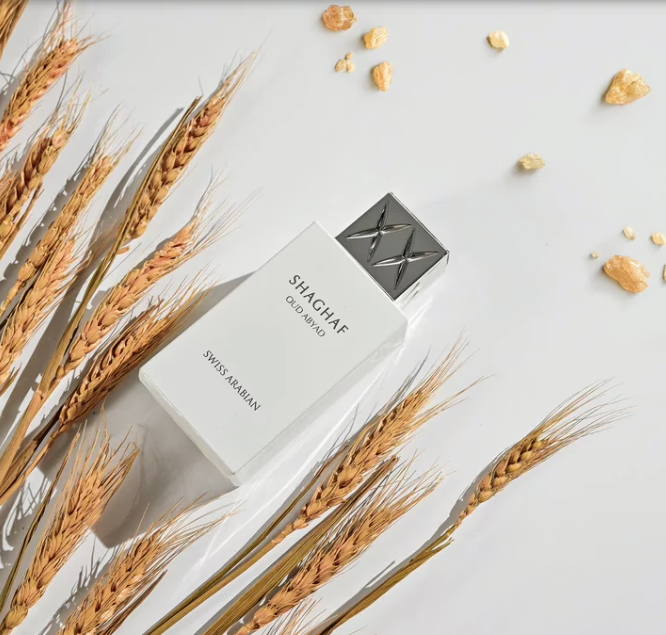What is Oud?

Oud is a highly aromatic oil that comes from the resin of trees. In perfumery, it is used, for example, as a base note – its characteristic depth and rich animalic scent contribute to the sexy, woody dry down. Oud perfumes and their earthy tones and mystique are all about seduction.
Shop Now: Swiss Arabian Tobacco 01
The appeal of oud is also rooted in its rich history — an ingredient that has been used for hundreds of years in herbal medicine, perfumery and spiritual traditions, especially in destinations across Southeast Asia and the Middle East. Having originated in India around 1400 BC, it first appears in the Srit to Vedas as a material used for wealthy and luxurious people.
Oud oil also appears in many other religious texts and practices: the agarwood tree, from which oud oil comes, is referenced a few times in the Bible’s Old Testament, and prophets in the Muslim faith purportedly cleaned their garments in its smoke.
Agarwood chips are often now burned as incense at religious ceremonies across China, Japan and India today – and oud oil is used as a mark of hospitality in mosques, temples and family homes around the world. In addition to its many religious applications, oud is also highly valued for its healing qualities: its anti-inflammatory and calming effects make it a popular ingredient in herbal teas and meditation practices.
Rich in history, oud perfumes represent an ancient tradition and an alluring scent that pays respect to this valuable substance and to the heritage and cultures of the world on a grand scale.
How is Oud Made?
As it happens, in Arabic, “oud” means “wood” — and its etymology is a clue to how the stuff is produced. At its most basic, oud is a natural resin sourced from the heartwood of the aquilaria tree, which grows mainly in the rainforests of Bangladesh, Indonesia and Thailand; all of these countries are within Southeast Asia, where the tree grows wild. There are fifteen plants in the genus aquilaria, though the resin for perfumes is almost exclusively taken from Aquilaria malaccensis.
So – how is oud made? Infected trees form a dark, fragrant resin, which exudes through the wood. The heartwood of the tree is usually light in colour and pale when it comes into contact with the resin reacts by turning a dark yellow and often amber colour. Artisan perfumers use other processes to extract the resin from the heartwood, such as distillation by steam or melting the compound. Like other natural resins – like labdanum from the cistus ladanifer plant or styrax tree’s benzoin – oud resin is rich, viscous, chokingly sticky and dark-hued. The oil itself, once extracted, is what is used to make beautiful oud perfumes.
What does Oud smell like?
Mystical and seductive, oud is a provocative fragrance with a unique character. It is often referred to as warm, rich, earthy, and sensual , with just a hint of skank. Belonging as it does to the natural world, fragrance connoisseurs often compare oud to the smell of wet, freshly overturned earth, a barnyard, or hay that’s been dried out in the sun.
If it is wild, oud can also smell differently depending on the species of the aquilaria tree it comes from: some of these resins are sweeter, some others are smokier, more balsamic, and their character changes as the resin dries. Synthetic ouds smell different, too: they are often less animalic than the natural, and generally a bit sweeter and nuttier.
The profile of oud will also be influenced by what is put with it in the top and heart notes – Royal Oud, for instance, shelters the ingredient’s characteristic woodiness with a cool slice of bergamot. Inflammable and lofty cinnamon, rose, and bitter orange catch fire with oud, while this woody warmth is boosted by vanilla and the buttery iris of the Royal Princess Oud from The House of Creed.
Why is Oud expensive?
Oud is one of the most expensive materials in modern perfumery, with agarwood among the most expensive woods on the planet at $100,000 per kilogram, largely because of its scarcity. Only about 1 in 10 trees in the forests of Southeast Asia will yield the resin naturally, so it is a very rare commodity, and a very sought-after one in perfume creation.
Another factor in oud’s price is how it’s extracted: before distillation, the wood chips infused with resin are graved out by hand, which can take hours at the time.
Because of how small the yield is, the aquilaria tree is now a protected species by the CITES (Convention on International Trade in Endangered Species of Wild Fauna and Flora), and many trees now have the resin produced artificially by injecting them with a microbial compound – so this is where synthetic ouds can really be used in place of the natural variety.
How long does Oud scent last?
Oud perfume is long-lasting on the skin as a result of its powerful concentration that can last from a few hours to a whole day. Being a chemical used in the fixative of fragrance, it is also the one that would stay for the longest duration over your skin, long after its top and heart notes have disappeared, you are likely to keep smelling an animalic or earthy scent.
In terms of a perfume, oud could be said to last just a little longer than other, more lightweight fragrances due to the fact that heavier and richer base notes like oud or ambergris are less susceptible to oxidizing, clashing with other lighter ingredients.
In general, the shelf life of oud fragrances is between three to five years. But of course, this can vary because of a number of reasons, such as formulation and the way you’re storing your fragrance.
Read More: How long should perfume last
Bottom Line:
What is Oud? Oud, also known a “liquid gold,” is a precious and exclusive perfumery ingredient that comes from the resin of agarwood trees . With a deep, rich, and complex scent profile, oud is revered in the world of perfumery for its formidable depth and longevity. Whether as a standalone note or incorporated alongside others, oud imparts a sultry and luxe edge that takes any fragrance to the next level.




